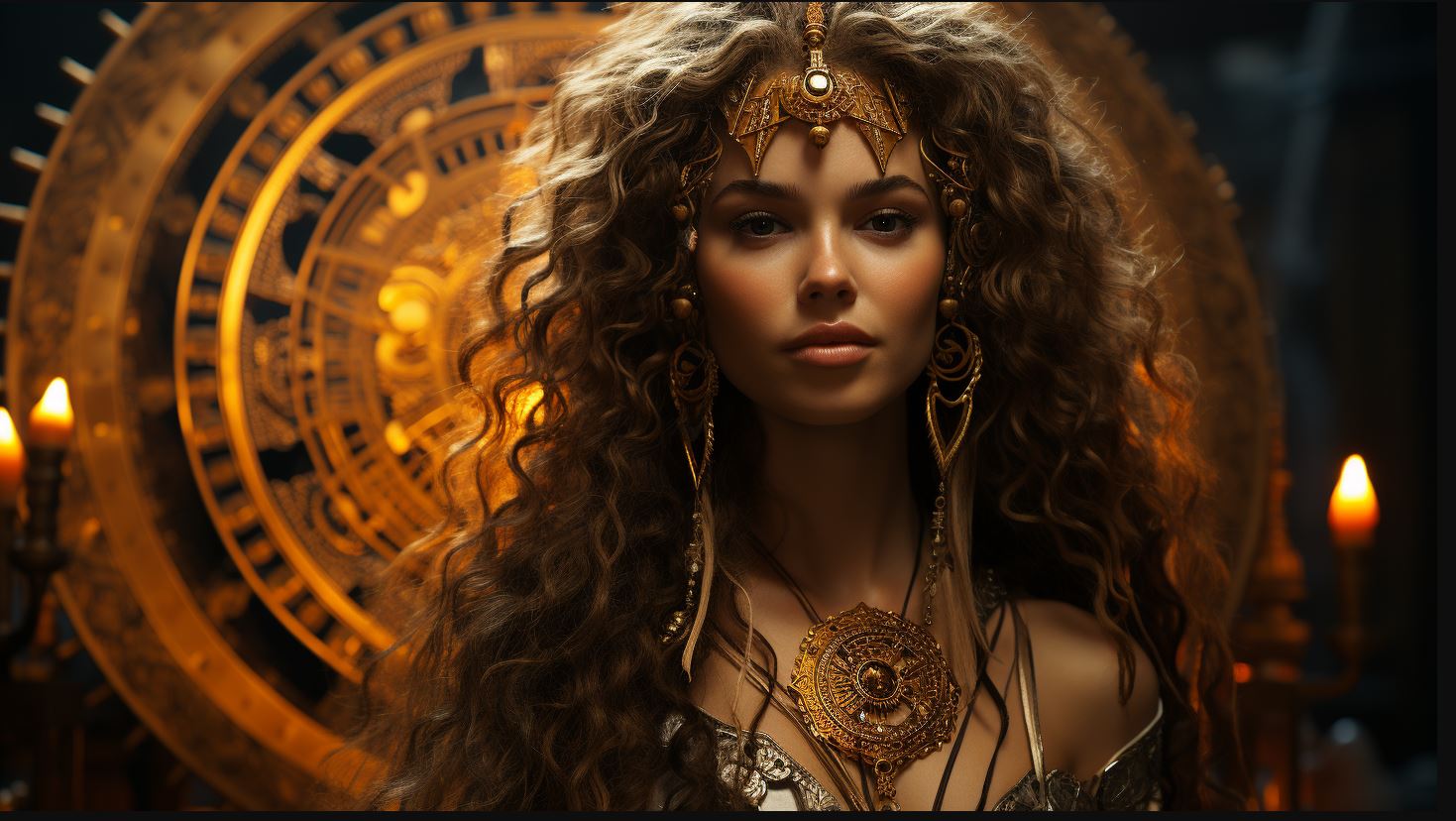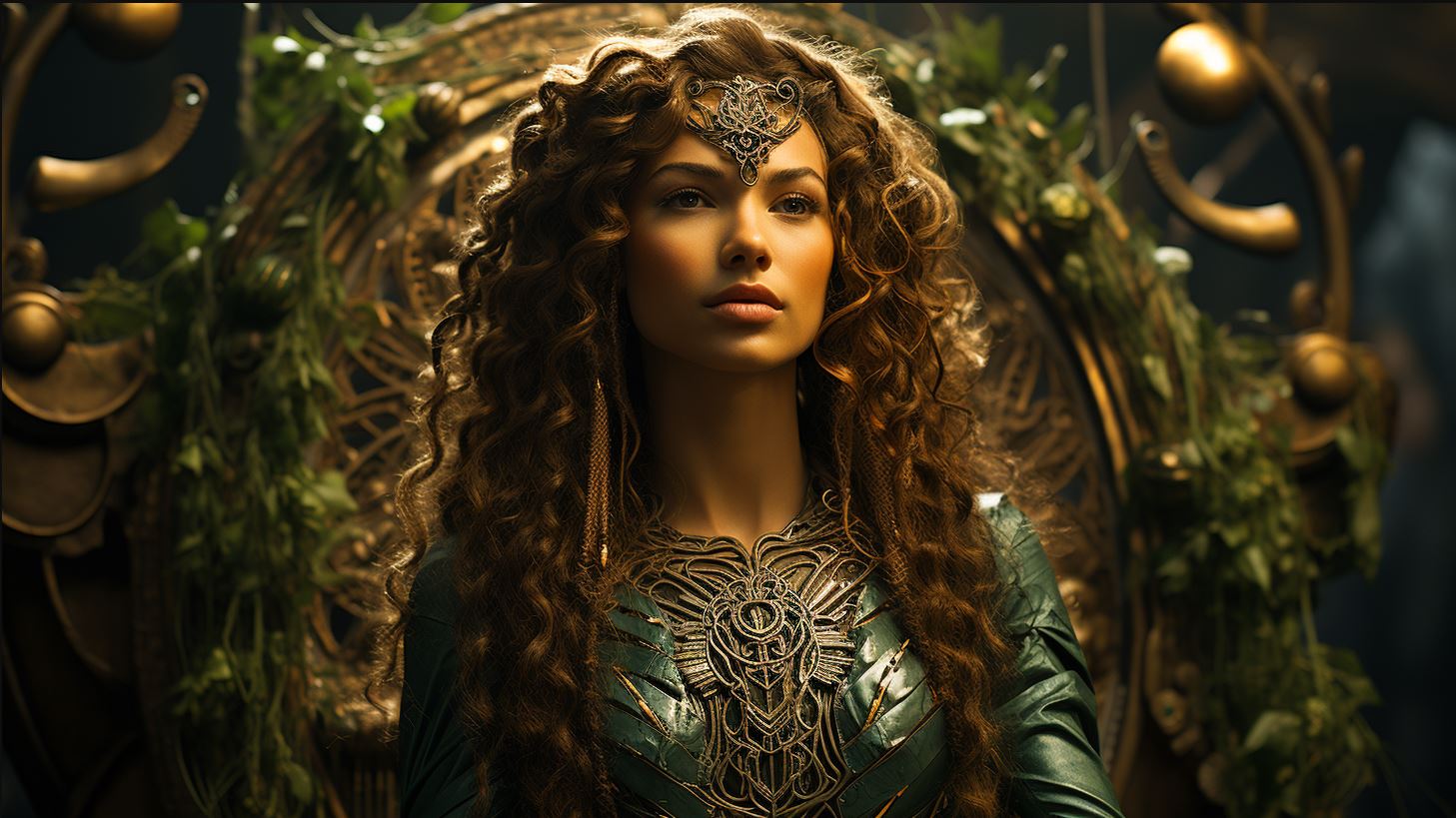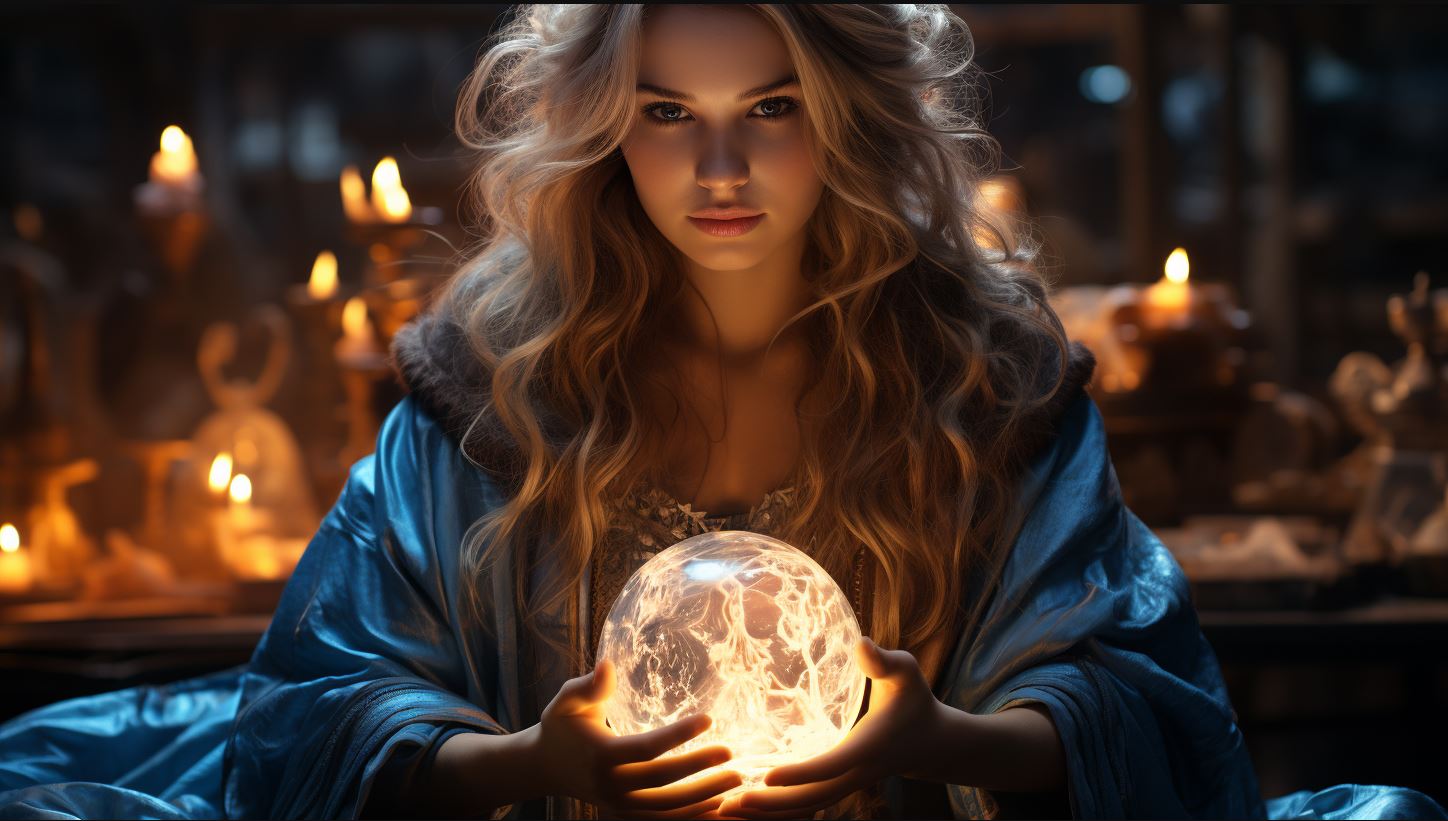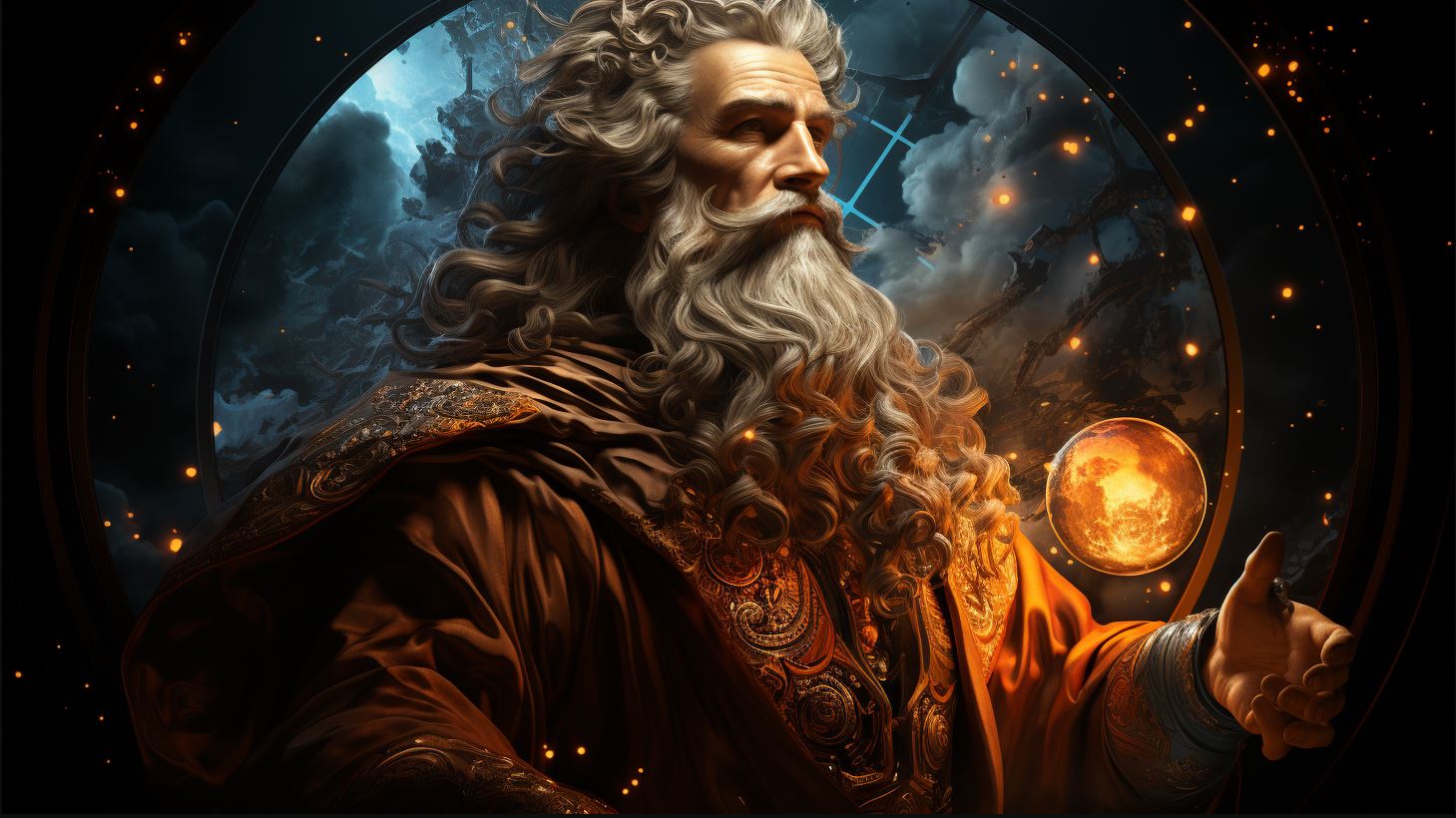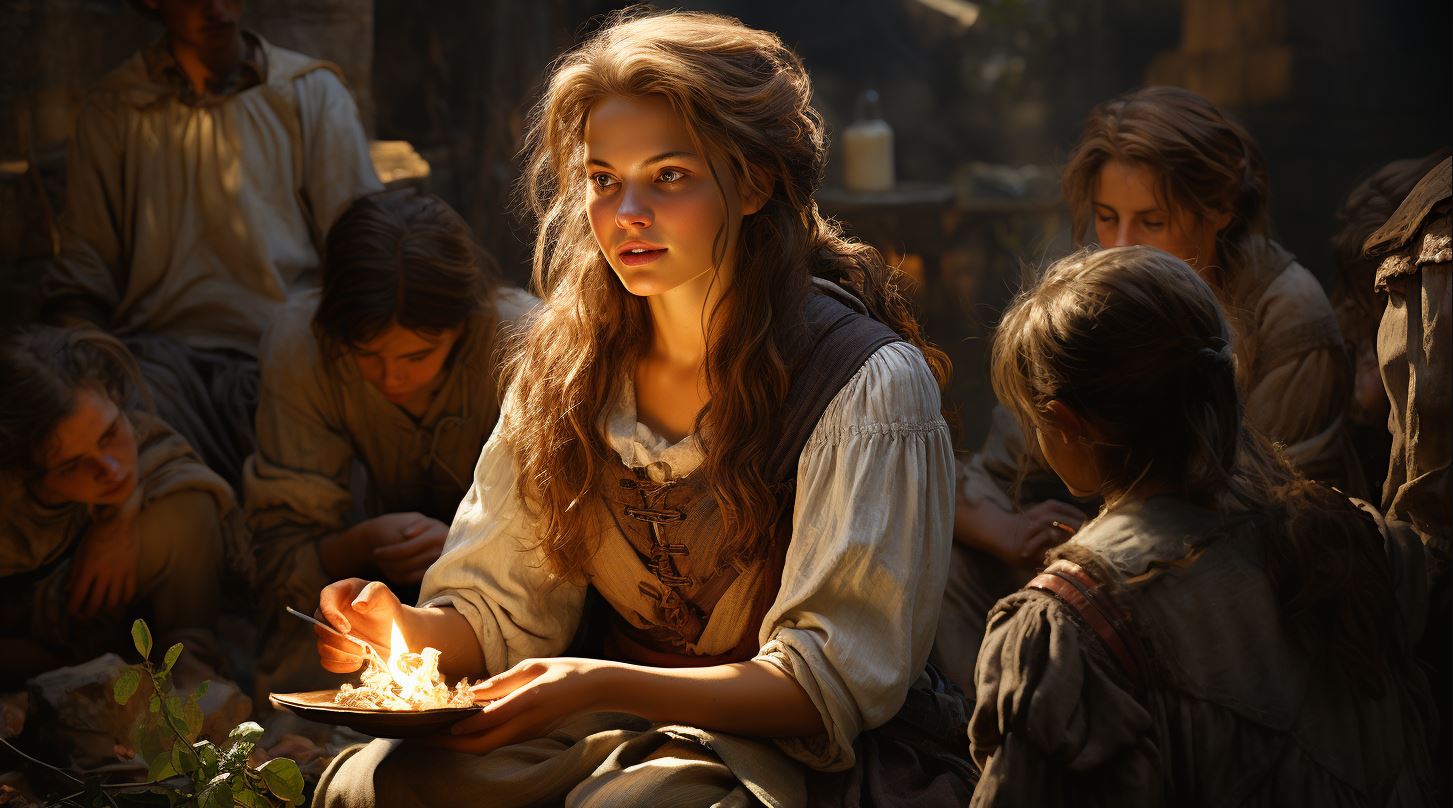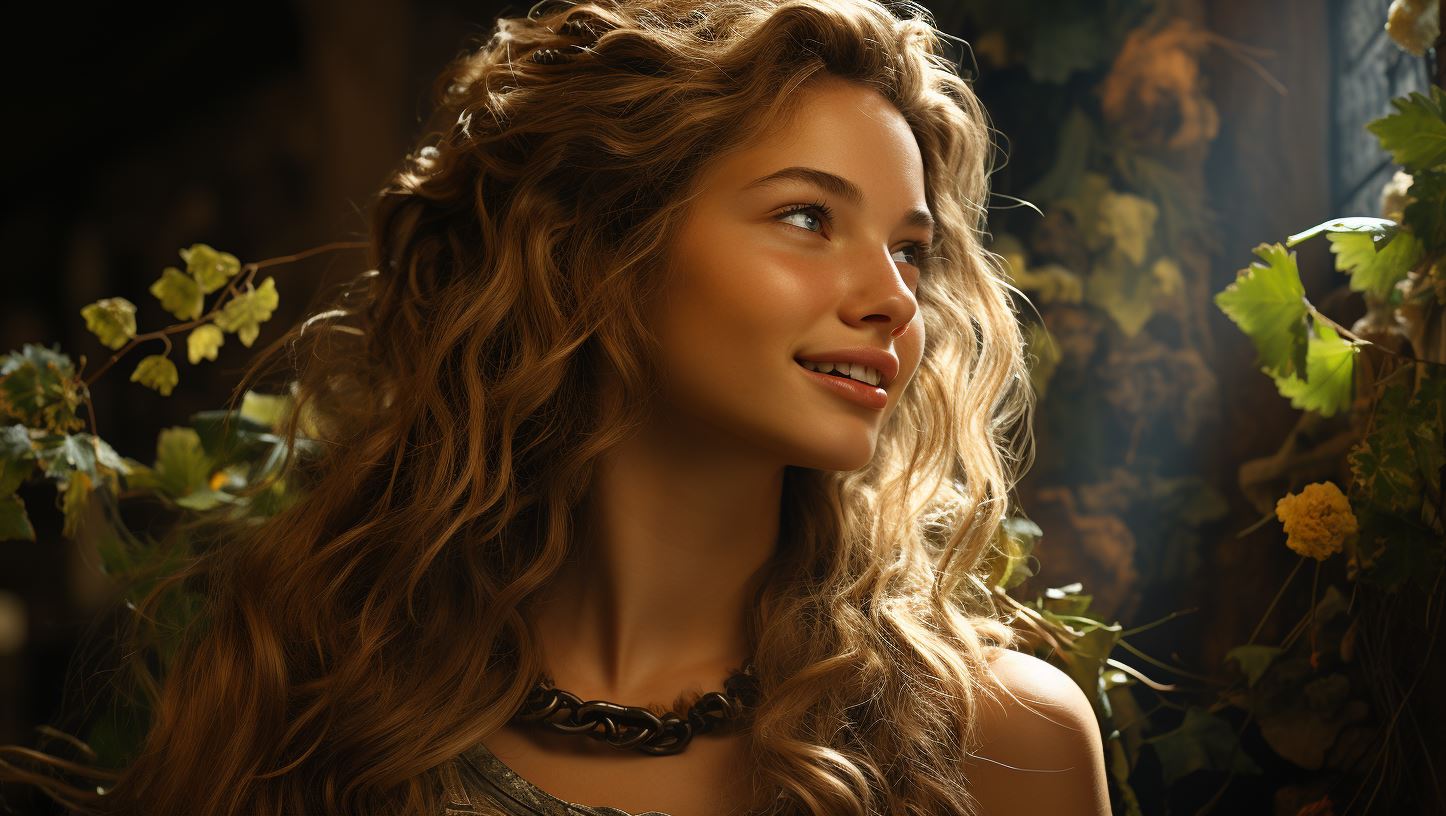Olwen Goddess: Unveiling the Ancient Celtic Power of the Golden Wheel

The Olwen goddess holds a significant place in Welsh mythology, embodying the ancient power of flowers and the sun. Also known as the ‘Dame of White Footprints’ and the ‘Golden Wheel of Bringing Summer Flowers,’ Olwen’s story revolves around her destined death upon marriage.
In the tale from the Mabinogion, Culhwch seeks King Arthur’s help to win Olwen’s hand, leading to a series of challenges. Olwen’s beauty surpasses that of flowers and sea foam, and she rules over the underworld, earth, and heavens.
Additionally, other goddesses such as Blathnat and Blodeuwedd share similar associations with the sun and flowers.
The Mythological Origins of Olwen Goddess
The ancient Welsh goddess Olwen holds a significant place in mythology, embodying the power of nature and divine femininity. Her presence is rooted in the depths of ancient Welsh folklore, where her story intertwines with elements of love, fate, and destiny.
Through exploring Olwen’s mythological significance, we can gain a deeper understanding of the cultural and symbolic value she holds.
The Ancient Welsh Goddess Olwen
Olwen, an ancient Welsh goddess, is revered as the embodiment of beauty, fertility, and the everlasting cycle of life. Her name, which translates to ‘Rueda Dorada’ or ‘Golden Wheel,’ symbolizes her association with the sun, warmth, and blossoming flora.
This celestial connection positions Olwen as a divine force that nurtures and sustains life on Earth.
Exploring Olwen’s Mythological Significance
Olwen’s mythological significance extends beyond her divine attributes. Her tale serves as a testament to the power of love, perseverance, and the interplay between mortal and immortal realms. As the daughter of the giant Yspaddaden Penkawr, Olwen’s destiny is intertwined with a prophetic curse that foretells her death upon marriage.
Culhwch, her cousin, embarks on a treacherous quest to win her hand, seeking the assistance of King Arthur and his companions.
This ancient tale showcases the heroic journey that Culhwch undertakes, highlighting the themes of bravery, determination, and the pursuit of love against all odds.
As we delve into Olwen’s story, we witness the depth of emotions, challenges faced, and the ultimate triumph of true love prevailing over adversity.
Olwen’s Name and Symbolism: The Golden Wheel
The name ‘Olwen’ itself holds rich symbolism, representing the golden wheel that represents the eternal cycle of life, growth, and renewal.
This association with the wheel signifies Olwen’s role as a guiding force during the changing seasons, particularly the arrival of summer. She embodies the essence of the sun’s radiant energy, breathing life into the flowers and plants that bloom under her gentle touch.
Symbolically, the golden wheel represents the interconnectedness of all things in nature, highlighting Olwen’s role as a bridge between the mortal and divine realms. Her name acts as a beacon of hope, reminding us of the cyclical nature of life and the transformative power of love and perseverance.
The Tale of Olwen in Welsh Mythology
According to Welsh mythology, Olwen is the daughter of the giant Yspaddaden Penkawr. Her story is filled with intrigue and adventure as she becomes the object of desire for many suitors, including the brave Culhwch.
Olwen: The Daughter of the Giant Yspaddaden Penkawr
Olwen, a captivating figure in Welsh mythology, is born as the daughter of the formidable giant Yspaddaden Penkawr. Her birth marks the beginning of a legendary tale filled with trials, destiny, and love.
The Quest for Olwen: Culhwch’s Journey
Driven by his deep affection for Olwen, Culhwch embarks on a perilous journey to win her hand in marriage. He faces numerous challenges and tasks set by Olwen’s father, Yspaddaden, as a means to test his worthiness.
Culhwch’s determination, loyalty, and cleverness guide him through each trial, proving his devotion to Olwen.
Arthur and Olwen: The Role of King Arthur in the Story
In the quest for Olwen, Culhwch seeks the assistance of none other than King Arthur himself. As a symbol of courage and wisdom, Arthur plays a crucial role in guiding Culhwch through the treacherous path to Olwen’s heart.
With Arthur’s support and the aid of his loyal companions, Culhwch faces formidable adversaries, ultimately leading to the fulfillment of his love for Olwen.
Through the tale of Olwen, Welsh mythology weaves a captivating narrative of love, courage, and destiny.
Culhwch’s journey and King Arthur’s involvement become intertwined with Olwen’s ethereal beauty and mystic essence, making this a legendary tale cherished for centuries.
Olwen’s Divine Attributes and Symbolism
Olwen, the ancient Welsh goddess, is associated with various divine attributes and symbolic elements that highlight her power and significance within Celtic mythology.
Olwen’s Appearance: A White Lady of Beauty
Olwen is described as a captivating figure, adorned in a radiant tunic of flaming silk.
Her beauty surpasses that of flowers and the frothy sea foam. With skin as fair as porcelain and hands more delicate than petals, she embodies the essence of purity and grace.
Olwen’s Realm of Influence: Flowers, Sun, and Nature
As a goddess of flowers and the sun, Olwen holds sway over the realm of nature. She governs the cycles of growth, birth, and renewal. Her presence brings forth the blossoming of flowers, the warmth of the sun’s rays, and the vitality of the natural world.
Olwen’s influence extends to all creatures and elements, highlighting her connection to the earth and its abundant flora.
The Traces of Olwen: White Track, Blooming Clover, and Golden Rings
Wherever Olwen walks, white tracks appear, guiding those who seek her blessings. These pristine footprints symbolize her divine presence and leave a lasting impression. Additionally, clovers in full bloom mark the path she traverses, representing luck and fortune for those who follow her trail.
In the legendary tales, Olwen is adorned with golden rings, embellished with precious rubies and emeralds. These rings serve as symbols of her eternal beauty and divine status, accentuating her connection to the celestial realm.
- White tracks mark her path, guiding seekers.
- Blooming clover serves as a lucky sign along her trail.
- Golden rings adorned with rubies and emeralds symbolize her eternal beauty.
Olwen’s divine attributes and symbolism hold immense significance, weaving a captivating tapestry that showcases her timeless allure and potent connection to the natural world.
Olwen and Other Celtic Goddesses
The mythology surrounding Olwen goddess is rich with other prominent Celtic goddesses, each representing various aspects of nature, divinity, and feminine power. Let’s explore some of these goddesses and their connections:
Blathnat: The Welsh Sun Goddess
Blathnat, the Welsh Sun Goddess, shares similarities with Olwen in her association with the sun’s radiant energy.
She embodies the warmth and life-giving qualities of sunlight, symbolizing growth, renewal, and vitality. Blathnat’s presence in mythology echoes Olwen’s significance as a deity associated with fertility and abundance.
Blodeuwedd: The Mythological Flower Maiden
Blodeuwedd, often referred to as the Mythological Flower Maiden, is another figure intertwined with Olwen’s symbolism.
Blodeuwedd is born from flowers and represents the changing seasons, particularly the arrival of spring. As a goddess of blossoms, she embodies beauty, transformation, and the cyclical nature of life, complementing Olwen’s portrayal as a goddess of flowers and the sun.
Connecting Olwen, Blathnat, and Blodeuwedd: Shared Themes and Symbolism
Floral Themes: All three goddesses are strongly associated with flowers and their profound symbolism in Celtic culture. Whether it’s Olwen’s flower-filled path, Blathnat’s solar radiance entwined with blossoms, or Blodeuwedd’s origin from petals, their connection to the botanical realm signifies the interconnectedness of nature and divinity.
Sun Symbolism: Olwen, Blathnat, and Blodeuwedd all hold ties to the sun, embodying aspects of its warmth, light, and life-affirming energy. The celestial connection underscores their roles as divine figures associated with growth, vitality, and the cycles of nature.
Divine Feminine: These goddesses embody feminine power and resilience, representing different facets of womanhood. Olwen’s beauty, Blathnat’s radiant energy, and Blodeuwedd’s transformative nature reflect the diverse qualities and strengths inherent in women.
By exploring the stories and symbols of Blathnat and Blodeuwedd alongside Olwen, we gain a deeper understanding of the interconnected mythology and the powerful roles these goddesses played in ancient Celtic beliefs.
Olwen’s Marriage and Seasonal Connection
The marriage of Olwen is intricately tied to the seasonal transition and the beginning of summer in Celtic culture. This section explores the significance of Olwen’s wedding, her fateful curse, and the symbolic representation of fertility and growth.
May: The Celtic Beginning of Summer and Olwen’s Wedding
In Celtic tradition, the month of May marked the commencement of summer. It was a time of celebration and new beginnings. Olwen’s wedding took place during this auspicious time, symbolizing the union of nature’s abundance with the eternal feminine.
Olwen’s Fate: The Curse and Culhwch’s Triumph
Although destined for misfortune upon marriage, Olwen’s fate is ultimately transformed by the heroic quest undertaken by Culhwch. This subsection delves into the curse that threatened Olwen’s life and the challenges Culhwch faced to prove his worthiness and secure their union.
The Symbolic Union: Olwen as a Representation of Fertility and Growth
Olwen’s marriage signifies more than a union between two souls. It embodies the fertility and growth that flourishes with the arrival of summer. Olwen, with her radiant beauty and connection to nature, represents the abundance and vitality that accompanies the seasonal transition.
- The blooming flowers and vibrant colors reflect the fertility and renewal that Olwen embodies.
- Her role as the bringer of summer flowers symbolizes the thriving life force that sustains nature.
- The golden wheel, her symbolic name, represents the cyclical nature of life and the perpetual cycles of growth and regeneration.
- Olwen’s union with Culhwch reflects the harmonious balance between masculine and feminine energies, necessary for the continuity of life.
Together, Olwen and Culhwch embody the resilience and potency of nature, as they overcome obstacles and embrace the transformative power of love.
By intertwining romance, fate, and seasonal symbolism, Olwen’s marriage serves as a testament to the cyclical nature of life, the importance of love and union, and the eternal rhythm of growth and renewal.
The Legacy of Olwen Goddess
As the powerful figure of Olwen goddess continues to captivate our imaginations, her legacy extends far beyond ancient Welsh mythology. In today’s world, Olwen finds representation and interpretation in various forms, offering insights into her enduring relevance in contemporary society.
Olwen in Modern Representation and Interpretation
Artists, writers, and practitioners of the mystical arts have been inspired by Olwen’s enchanting tale, resulting in numerous artistic representations. Paintings, sculptures, and even tattoos portray Olwen’s ethereal beauty and symbolize the enduring power of nature.
Additionally, poets and authors draw inspiration from her story, infusing their works with her themes of love, resilience, and the cycle of life.
Rediscovering Olwen: Her Relevance in Contemporary Spiritual Practices
In the realm of spirituality, Olwen serves as a guide for those seeking to reconnect with nature and feminine energy.
Many individuals incorporate Olwen into their spiritual practices, viewing her as a representation of the divine feminine and drawing strength from her story of overcoming obstacles. Her connection to flowers, the sun, and the changing seasons symbolizes the cyclical nature of existence and serves as a reminder of the inherent resilience within all living beings.
Olwen as a Symbol of Feminine Power and Resilience
Olwen represents the embodiment of femininity, symbolizing strength, beauty, and grace. Her story showcases the power that lies within women, transcending societal expectations and defying traditional roles. Olwen’s determination to follow her own path, despite the challenges she faces, inspires women today to embrace their own strength and resilience in the face of adversity.
As we continue to explore Olwen’s legacy, it becomes evident that her story transcends time and culture, resonating with individuals seeking inspiration, connection to nature, and the affirmation of feminine power.
The ancient goddess continues to remind us of the profound significance of embracing our own inner strength and the transformative power of love and perseverance.
.











